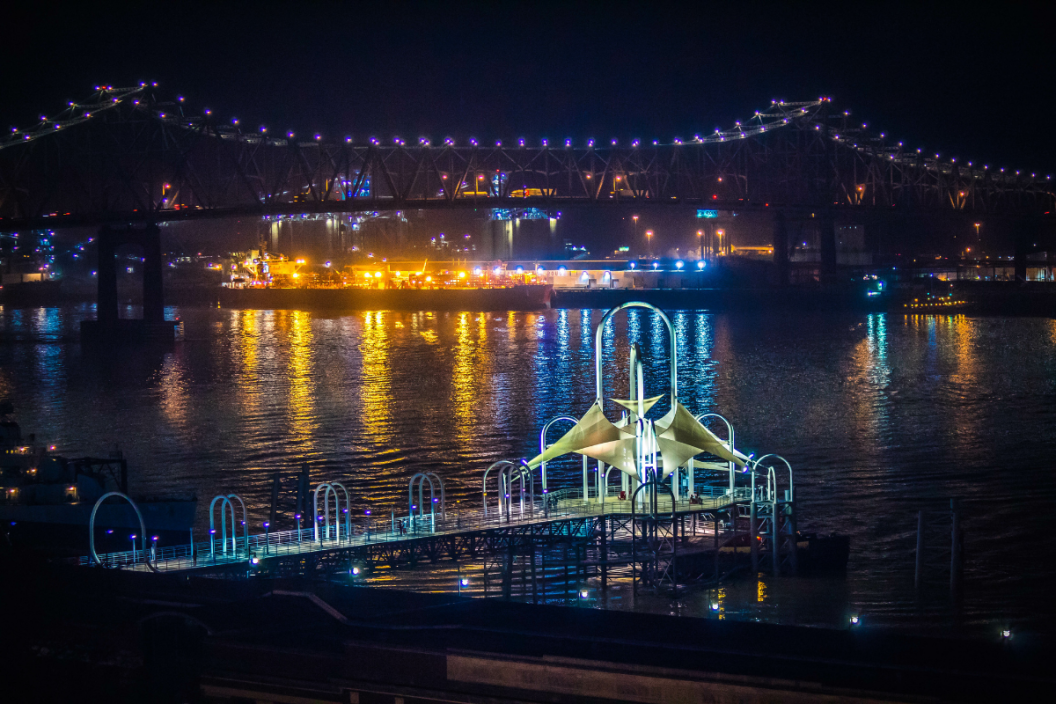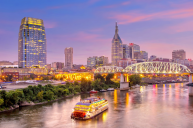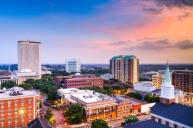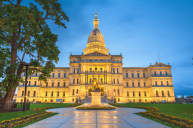The capital city of the state of Louisiana is Baton Rouge. Located on the Mississippi River in between New Orleans and Lafayette, the Louisiana state capital boasts many activities and experiences to enjoy.
Louisiana is bordered by Mississippi, Arkansas, and Texas and is surrounded by bayous, wetlands, and engrained with deep southern roots. Whether you are from Louisiana and looking for a weekend getaway or road-tripping from west Florida, Oklahoma, or another part of the states, Baton Rouge is sure not to disappoint.
About the Capital of Louisiana
https://www.instagram.com/p/CHtaPhmFc0M/?utm_source=ig_web_copy_link
Baton Rouge is the second-largest city by population in Louisiana (behind New Orleans and in front of Shreveport). If we are talking in terms of size, the city of Baton Rouge is the third-largest in the state, spanning 88.65 square miles.
This cajun city offers exciting museums from wartimes past to a castle-like capitol building to one of the premier southern universities to wildlife outings to incredible Creole culture. Baton Rouge is fitted with a downtown levee that prevents floods and leads the rushing waters of the Mississippi River into the Gulf of Mexico. Louisiana is broken up into parishes instead of the typical counties, and Baton Rouge lies in the East Baton Rouge Parish.
History of the Baton Rouge Area
Native Americans who call this land home include the Chahta Yakni (Choctaw), Houma, and Bayogoulas tribes. At the turn of the 17th century, French explorers gave the region the name "red stick" because of a boundary pole they found stained with animal blood. To the north of the red stick lived the Houma tribe, and to the south, the Bayogoulas.
10 Things to Do in the Capital of Louisiana, Baton Rouge
1. Louisiana's Old State Capitol
https://www.instagram.com/p/CHT7etpnpqS/
Situated on a hill that looks over the Mississippi River in the downtown district, the castle-like fortress that was once the capitol building of Louisiana. Restored to its original glory, the Old State Capitol is now a museum that serves as one of the most visited places in the city. Find exhibits ranging from interactive to traditional to multi-media art and presentations. This National Historic Landmark is free to visit, and tours are offered in English, French, German and Spanish.
2. Louisiana State Capitol Building
https://www.instagram.com/p/CPXSzlir2HY/?utm_source=ig_web_copy_link
Another National Historic Landmark, the Louisiana State Capitol, is currently home to the LA state government. Also located downtown, the U.S. state of Louisiana's capitol building houses the chambers for the Louisiana State Legislature, which includes the House of Representatives and Senate and the Governor of Louisiana. This statehouse boasts a well-known art-deco design and was commissioned by Huey P. Long when he decided that the state should have a new capitol building.
3. Louisiana State University (LSU)
https://www.instagram.com/p/CI8TsyRn5Wm/?utm_source=ig_web_copy_link
One of the premier southern universities in North America, Louisiana State University (LSU), is the proud home of Mike The Tiger. This public land-grant research university was founded in 1853 under Louisiana State Seminary of Learning & Military Academy. When you visit, you can tour the campus and see hot spots like Mike the Tiger's Habitat, the Tiger Stadium, and visit the Andonie Sports Museum.
Did you know that Mike The Tiger is the only living tiger on a college campus?
4. Eat Cajun Food
https://www.instagram.com/p/B-z4Mszj75i/?utm_source=ig_web_copy_link
RELATED: 10 Reasons to Visit Austin, Texas: "The Live Music Capital of the World"
No trip to Baton Rouge is complete without eating as much creole and cajun food. The city features a wide array of local eateries and popular restaurants. Check out this list of favorites.
5. Civil War History
https://www.instagram.com/p/BSpkpbEFoH4/?utm_source=ig_web_copy_link
As a dominant region of the Confederate States of America, there is a deep-rooted Civil War history of the Baton Rouge area. During the antebellum period, LA was a slave state where African Americans held most of the demographic during the 18th-century French and Spanish donations. A figure who was central in the French colonization of LA in "New France" was Pierre Le Moyne d'Iberville.
You can learn more about Louisiana's part in both the Civil and World War I and the history of this creole nation at the Louisiana State Museum's Capitol Park Museum, the Old State Capitol Museum, and the USS Kidd Veterans Museum.
6. Mardi Gras
https://www.instagram.com/p/B8t7AFXjDpb/?utm_source=ig_web_copy_link
When you think of Mardi Gras, you usually think of New Orleans and Bourbon Street. Still, the Mardis Gras spirit is alive and well in the entire state of Louisiana. Baton Rouge hosts the annual celebration in the middle of February that sees thousands of visitors flock to the city for celebrations and libations.
7. Magnolia Mound Plantation
https://www.instagram.com/p/CFDSKKqgMd6/?utm_source=ig_web_copy_link
Another National Historic Landmark, the Magnolia Mound Plantation, is a French Creole plantation house that dates back to 1792. This historic site showcases the unique Louisianan culture and what life was like hundreds of years ago. You can take a tour or a self-guided walk to witness the museum house, an open-hearth kitchen, overseer's house, quarter house, crop garden pigeonnier, and carriage house.
8. Capitol Park Museum
https://www.instagram.com/p/B_8qoVhFM93/?utm_source=ig_web_copy_link
Nestled downtown, the Capitol Park Museum displays themed exhibits all about the state's history, industry, and culture. The two permanent exhibits include Grounds for Greatness: Louisiana and the Nation and Experiencing Louisiana: Discovering the Soul of America.
9. River Road African American Museum
https://www.instagram.com/p/B76enIJA7J_/?utm_source=ig_web_copy_link
To educate yourself on the heritage of African Americans in the Baton Rouge area, make a stop by the River Road African American Museum. The museum presents over 300 years of the legacy and vitality of enslaved Africans and later freed in this southern state.
10. Burden Gardens
https://www.instagram.com/p/CBlHCoFlzmi/?utm_source=ig_web_copy_link
Nature lovers who visit the area will appreciate enjoying a day at Burden Gardens. The museum and gardens are composed of the Botanic Gardens, Windrush Gardens, and the Rural Life Museum. Walk along the trails and find a range of lush greenery ranging from herbs, roses, tropical plants, swamps, trees, and great live oaks.
Frequent visitor to Baton Rouge? Share your favorite stop at our Wide Open Roads Facebook!




